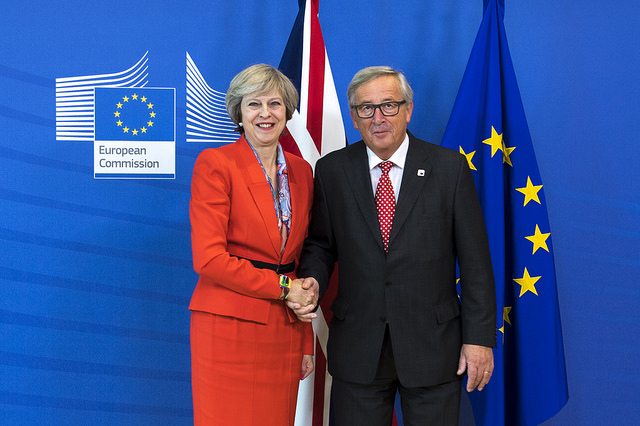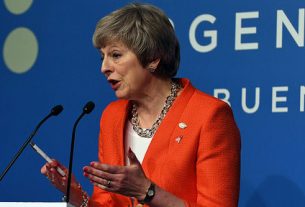Prime Minister Theresa May clinched a draft agreement with Brussels on the UK’s departure from the EU and claimed a full deal is ‘within our grasp.’
She said the political declaration setting out a framework for the future relationship between the UK and EU was ‘right for the whole of the UK.’
But she walked into a wall of criticism of the proposed deal on her return to the House of Commons, with opponents claiming it is ‘vague and flawed.’
The European Council confirmed today that that political declaration covering trade, security and other issues had been agreed in principle.
It is a blueprint for the sort of relationship the UK and the EU will have after Brexit, but is not legally binding and some of the wording is deliberately vague.
Today’s breakthrough follows agreement between London and Brussels last week on the outline terms for the UK’s departure from the EU on March 29 next year.
The 585-page withdrawal agreement is legal binding and covers a range of post-Brexit issues, including:
- The rights of UK and EU citizens.
- The Northern Ireland border backstop.
- Payment of the UK’s £39 billion departure bill.
The toughest issue to resolve was the Irish backstop, designed to avoid a hard border between Northern Ireland and the Republic.
Mrs May said that the deal would ‘deliver the Brexit that people voted for’ and her spokesman insisted there would be no second referendum while she was in office.
“All our efforts must be focused on working with our European partners to bring this process to a final conclusion in the interests of all our people,” Mrs May said.
“The British people want Brexit to be settled, they want a good deal that sets us on a course for a brighter future, and they want us to come together as a country.
“The deal that will enable us to do this is now within our grasp. In these crucial 72 hours ahead, I will do everything possible to deliver it for the British people.”
But there was widespread anger here about the deal from Labour, the Liberal Democrats and some of Mrs May’s Tory colleagues.
Labour Leader Jeremy Corbyn said the declaration was ‘26 pages of waffle’ and ‘the blindfold Brexit we all feared – a leap in the dark.’
Liberal Democrat leader Sir Vince Cable repeated his call for is another referendum and said the agreement was ‘full of worryingly vague aspirations.’
Former Foreign Secretary Boris Johnson took to Twitter to denounce the deal as ‘making a nonsense of Brexit’ as long as the backstop remained in place.
If it is signed off, the political declaration will form the basis of a future trade deal between the UK and EU, to be agreed during the 22-month Brexit transition period.
The declaration contains:
- A UK commitment to respect that the EU’s four freedoms – free movement of people, money, goods and services – cannot be separated.
- An acknowledgement of the intention to end free movement in the UK.
- An agreement to explore the use technology to avoid the need for the Northern Ireland backstop to be activated.
- An ongoing role in the interpretation of EU law for the European Court of Justice.
Mrs May returns to Brussels this weekend for continuing talks with European Commission president Jean-Claude Juncker.
Her officials will also try to secure a deal with Spain over its objections to future arrangements for Gibraltar and French concerns over fishing rights in UK waters.
If that is resolved, EU leaders will gather on Sunday to sign off on the political declaration and the withdrawal agreement.
The Prime Minister’s next challenge will be to persuade sceptical MPs from all sides to vote for the deal in Parliament.




